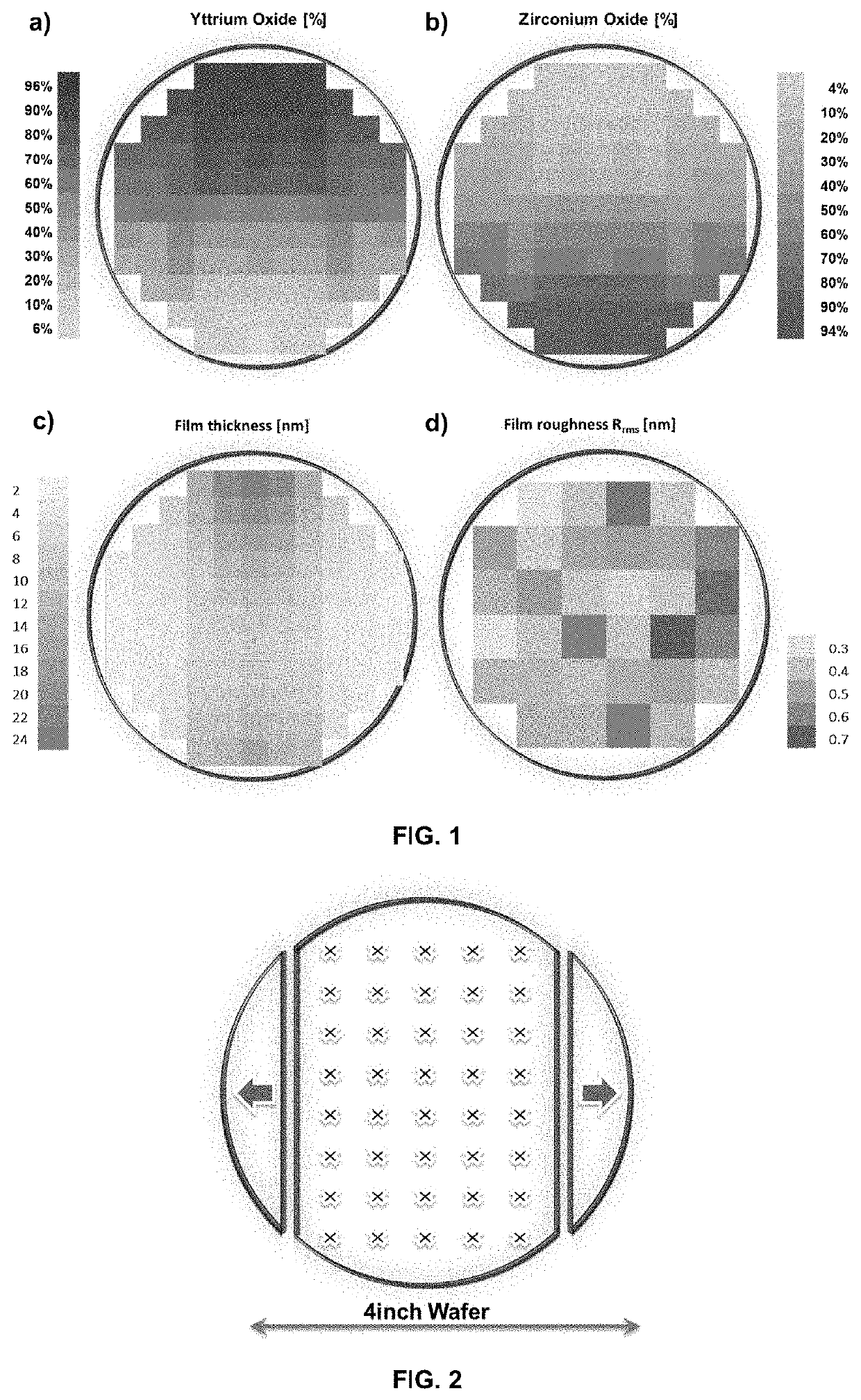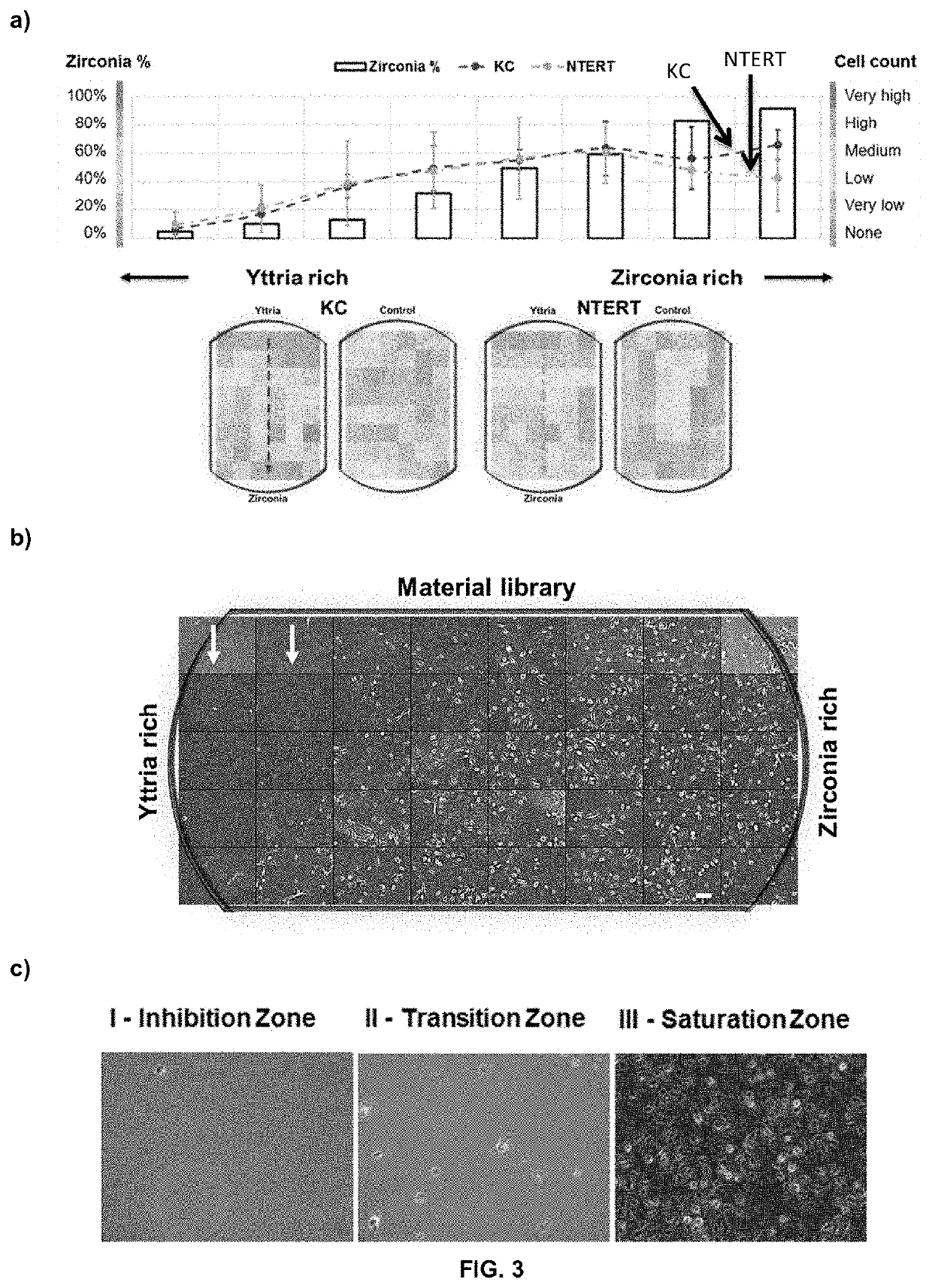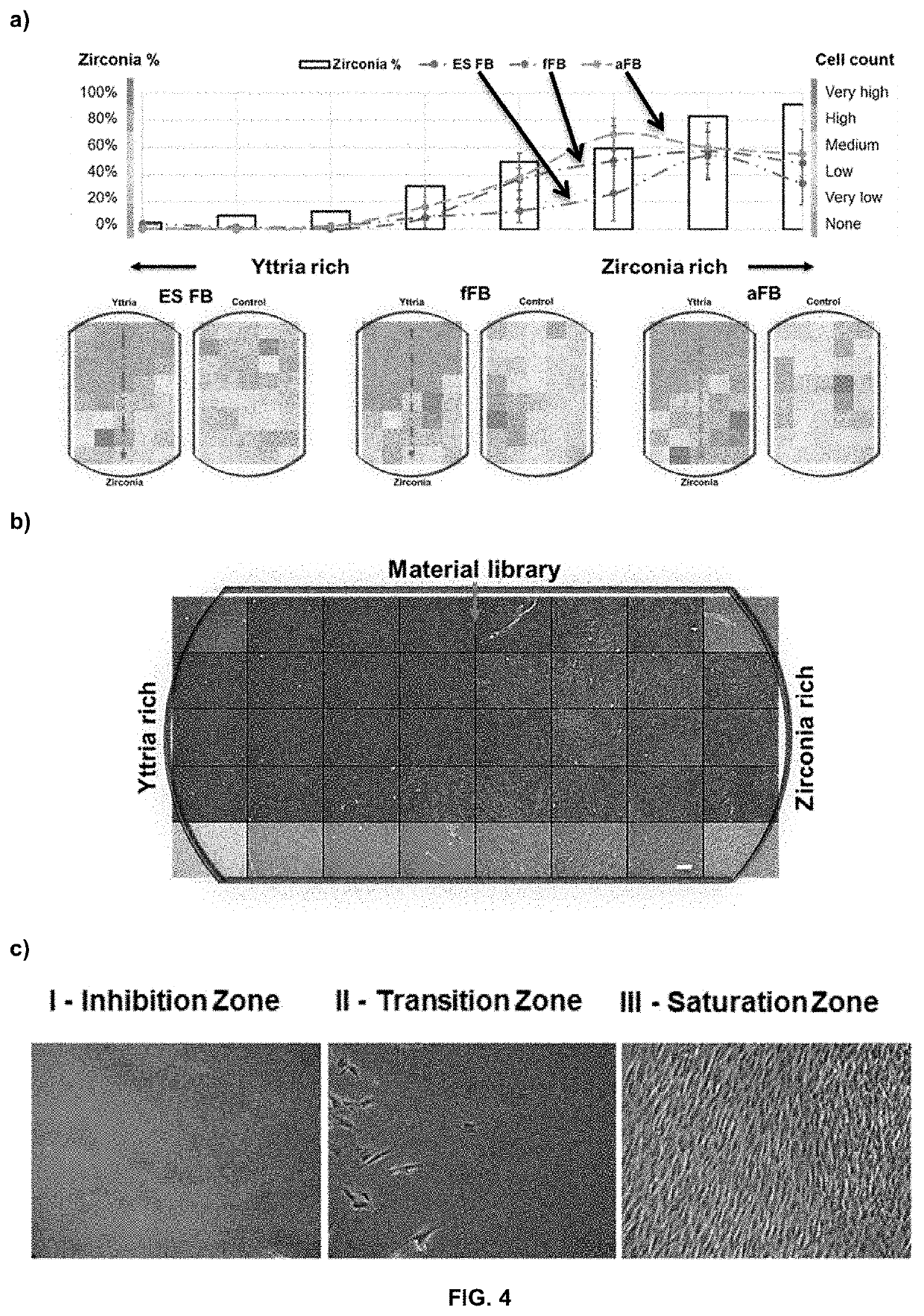Thin film deposited inorganic metal oxide as a selective substrate for mammalian cell culture and as an implant coating
a technology of inorganic metal oxide and thin film, which is applied in the direction of skeletal/connective tissue cells, artificial cell constructs, prostheses, etc., can solve the problems of not always easy to achieve and not always suitable for us
- Summary
- Abstract
- Description
- Claims
- Application Information
AI Technical Summary
Benefits of technology
Problems solved by technology
Method used
Image
Examples
example 1
[0118]A: Fabrication of ZrO2—Y2O3 Coated Substrates
[0119]Thin film coatings of ZrO2—Y2O3 on substrates were carried out using an adapted Pulsed Laser Deposition Continuous Composition Spread Technique (e.g. see Review of Scientific Instruments 72(6) (2001) 2673-2678). Round fused silica substrates of 4 inches in diameter were first cleaned by a series of washes (2 minutes each) in the following sequence:
1) trichloroethylene (J. T. Baker);
2) deionised water;
3) acetone (J. T. Baker);
4) deionised water;
5) methanol (J. T. Baker); and
6) deionised water.
[0120]Each step was followed by the removal of excess liquid by blowing under a steam of nitrogen.
[0121]The ZrO2 target for Pulsed Laser Deposition (PLD) was prepared by compressing ZrO2 powder (99.99% purity, Sigma Aldrich) into a pellet, which was then sintered at 1000° C. for 12 h. Similarly, Y2O3 powder (Alfa Aeser, 99.999% purity) was compressed into a pellet and sintered at 1000° C. for 12 hours. The ZrO2—Y2O3 material thin films wer...
example 2
[0132]Growth of Immortalised Human Keratinocyte Cell Line (N / TERT-1s), Primary Human Keratinocytes (KC) on Y2O3—ZrO2 Coated Substrates
[0133]FIG. 3 shows the dependence of the keratinocytes cell count (average from the row) related to the chemical composition of the Y2O3—ZrO2 coated substrate (cultured over 5 days). As shown in FIG. 3a, the cell counts for both cell lines increased with increasing ZrO2 content on the surface. There were no significant differences between the primary KC cells and the NTERT cells, indicating that both cell lines have similar affinity to the oxide material surface.
[0134]For the control substrate (SiO2 substrate without metal oxide coating), the cells grew everywhere with no specificity to any part of the substrate (not shown). However, for the Y2O3—ZrO2 coated substrates, less cells were observed on the first two columns of the substrate (Y2O3>80%, indicated by the arrows) which suggests the preference of these cells towards ZrO2 rich surface, and not Y...
example 3
[0136]Growth of Primary Human Foreskin Fibroblasts (fFB), Adult Fibroblasts (aFB) and Fibroblast Cell Lines (ES-FB) on Y2O3—ZrO2 Coated Substrates
[0137]FIG. 4 shows the adhesion of three fibroblasts cell lines, primary human foreskin (fFB) fibroblasts, adult fibroblast (aFB) and fibroblast cell line (ES-FB), cultured over 5 days on Y2O3—ZrO2 coated substrates. For the control substrate (SiO2 substrate without any metal oxide coating), the cells grew everywhere with no specificity to any part of the substrate (not shown). However, for the Y2O3—ZrO2 coated substrate, minimal or no cell growth was observed for the first 4 columns of the metal oxide-coated substrate (where Y2O3>50%), while more cell growth was observed in regions with coating containing more than 50% ZrO2 (FIG. 4a). This suggests that the fibroblast cell type has a different adhesion requirement to the previously shown keratinocytes. Interestingly, the highest number of cells was observed in the intermediate region (mos...
PUM
| Property | Measurement | Unit |
|---|---|---|
| Temperature | aaaaa | aaaaa |
| Temperature | aaaaa | aaaaa |
| Nanoscale particle size | aaaaa | aaaaa |
Abstract
Description
Claims
Application Information
 Login to View More
Login to View More - R&D
- Intellectual Property
- Life Sciences
- Materials
- Tech Scout
- Unparalleled Data Quality
- Higher Quality Content
- 60% Fewer Hallucinations
Browse by: Latest US Patents, China's latest patents, Technical Efficacy Thesaurus, Application Domain, Technology Topic, Popular Technical Reports.
© 2025 PatSnap. All rights reserved.Legal|Privacy policy|Modern Slavery Act Transparency Statement|Sitemap|About US| Contact US: help@patsnap.com



